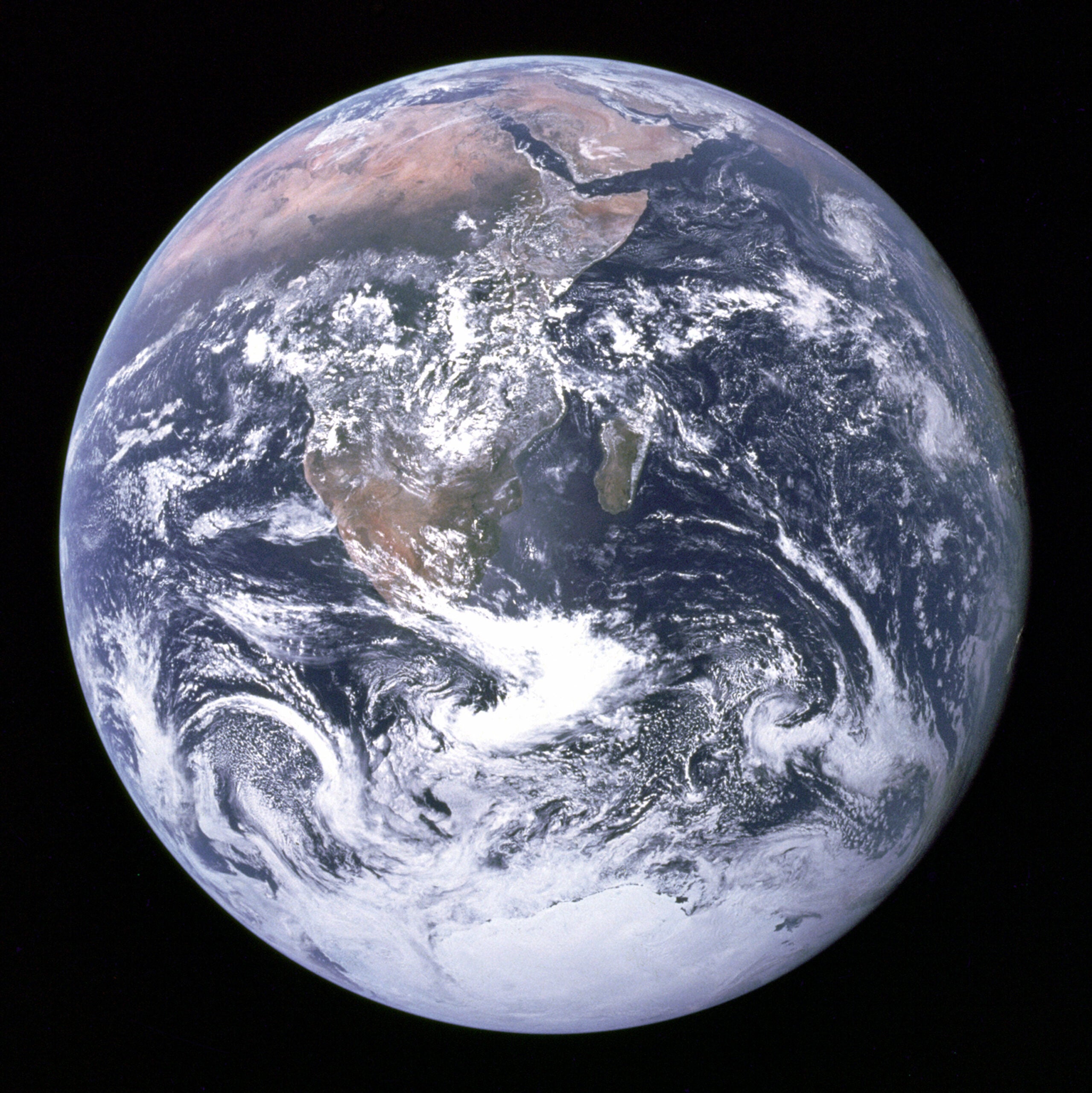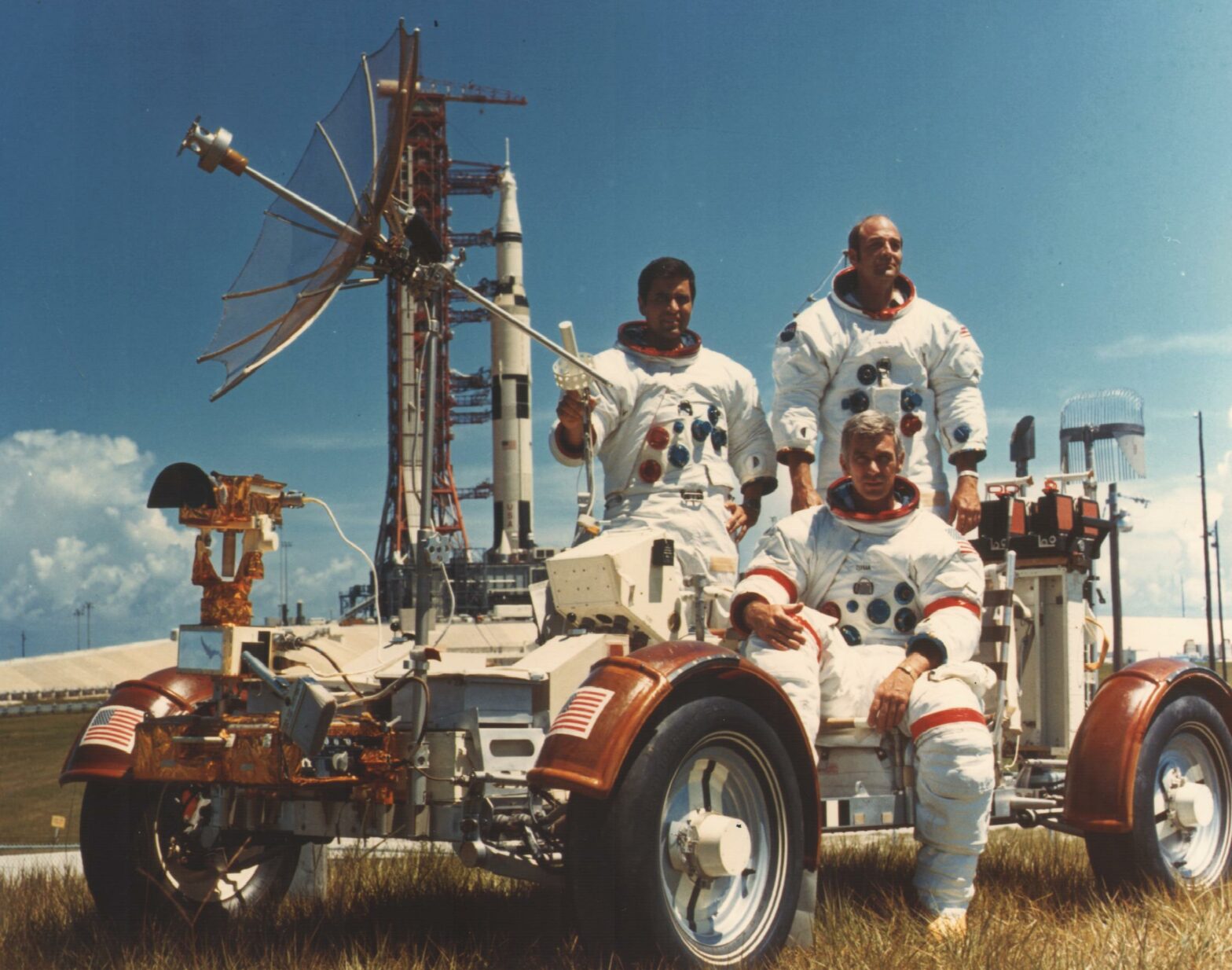[ad_1]
Fifty years ago, on December 7, 1972, NASA’s Saturn V rocket lifted off from Cape Canaveral, Florida, carrying the last of the Apollo-era astronauts to walk on the lunar surface.
Apollo 17—the sixth and final mission of NASA’s history-making initiative to land human explorers on the moon—was a scientific breakthrough: During their 75-hour lunar stay, crewmembers Eugene A. Cernan, Ronald E. Evans, and Harrison H. Schmitt collected rare types of lunar rock and samples of “orange soil,” or regolith, that once formed in a lunar volcanic eruption, indicating that the moon’s past eras of geologic activity lasted longer than previously thought—which recent research has confirmed. But their most influential observation quickly became a milestone in our culture: With the help of one iconic photo, the mission vastly changed the way humans view our space environment.
About five hours into the crew’s moon-bound journey, the shrinking sphere of our world drew someone’s gaze (it’s still up in the air which member of the three-person crew was responsible) to the window. Upon seeing the beautiful, brightly illuminated Earth, a particularly astute astronaut grabbed hold of the onboard Hasselblad film camera and began snapping. Among those images was the one now known as the Blue Marble shot, the first photograph ever taken of the planet in its entirety.

The once-in-a-lifetime shot showcases the African continent, which is almost completely visible and backed by the swirling blue ocean. Above it, chaotic, wind-swept clouds dot our atmosphere. This was Earth as humanity had never seen it before, richly detailed and alight with life.
Easily one of the most recognizable space images ever made, Blue Marble is the only picture of the entire, round Earth taken by human hands to date. It and those first few stunning images of our planet went on to inform how official space agency photographers arrange shots of Earth and other celestial bodies, and influenced the way we take and share images of space today.
Travis Rector, an astronomer at the University of Alaska Anchorage and an astrophotographer, someone who takes photos of space phenomena in their free time, believes that all astronomers of his generation were especially inspired by the beauty of early space-age photos. “They were our first high-quality views of exotic worlds like Mars and the moon, turning these dots in the sky into real worlds we could imagine visiting in person,” he says. “The Blue Marble photo is especially important because not only does it show the spectacular beauty of our world but also its limits.”
[Related: How scientists colorize Hubble’s deep space photographs]
Those limits are all the world’s resources, like the food, air, and water that sustain us, he says. Yet in celebrating Apollo 17’s 50th anniversary, how has humanity’s ability to capture otherworldly beauty evolved since we began heading to the stars?
When Blue Marble is compared to modern high-resolution pictures of Earth and other celestial entities delivered by satellite, or by the Artemis program’s soon-to-be-returning Orion spacecraft, for example, the difference a few decades of technological advancement makes is palpable. In fact, the advent of more powerful cameras, able to take photos in infrared, X-ray, and other light that our eyes cannot see, is a major influence on our expectations about what the universe looks like.
The second factor, Rector notes, is “better data-processing and image-processing software.” As every iteration of spacecraft improved, camera-equipped craft have taken many of the daring space images that adorn our nerdiest space merchandise. And humanity has only gotten better at sending and receiving data from its most distant space explorers. Though Apollo often sent back grainy black and white video from the moon, according to NASA, the Artemis II mission will transmit ultra high-definition video from lunar orbit.
Such incredible technicolor is a far cry away from when the Voyager missions, twin crafts that are now celebrating their 45th mission year, were sent to space with what would be now rudimentary 800×800 pixel digital video cameras. “For comparison, the Wide Field Instrument that will fly on the Nancy Grace Roman Space Telescope is a 300-megapixel camera,” Rector says. He imagines that the technology we use to take high-resolution images of space might still evolve as cameras get better at measuring light without the need for filters, noting that it “will open up all sorts of new ways to make color composite images of space.”
[Related: 2021’s best space photos are out of this world]
Astrophotography has become a beloved staple across social media, the final product of which is often featured on hundreds of dedicated websites, and emblazoned on clothing, book covers, and space-inspired posters. And as the first of NASA’s next-generation lunar missions comes to an end, the returned stills and videos gifted us by Orion have already cemented their place as some of the most absorbing snapshots to ever come out of a space program.
Apollo 17’s famous photo marked the end of an era in human spaceflight. It ended up being a hallmark in the history of space photography,
It’s a fitting tribute to human exploration of the moon—a feat that was once deemed impossible.
[ad_2]
